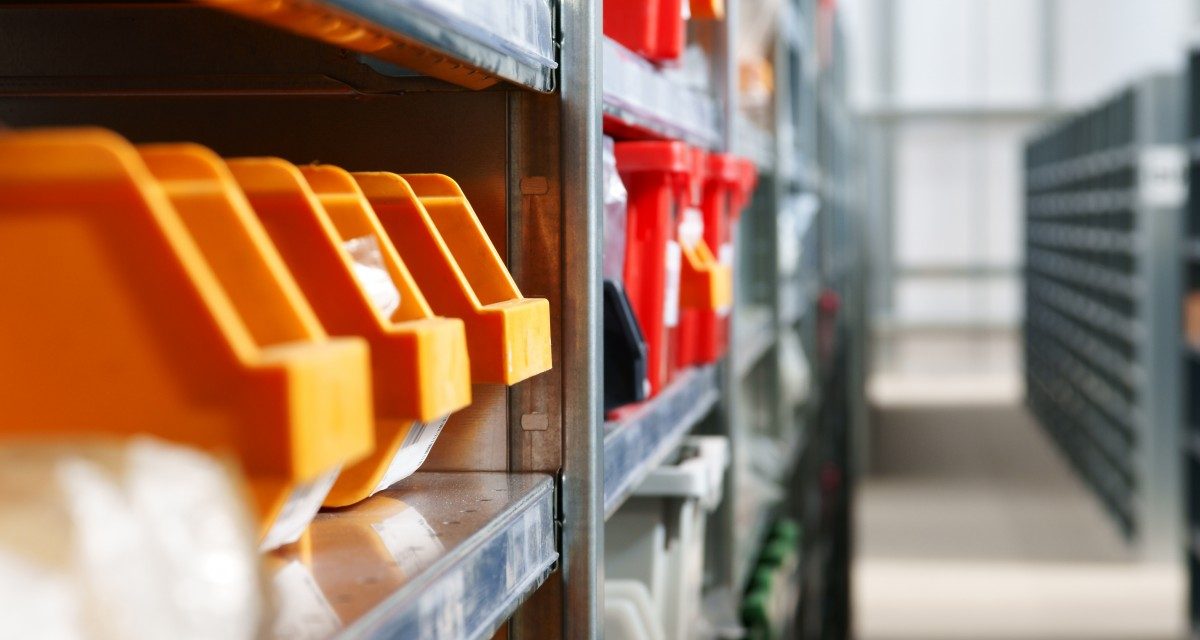Obsolete Materials – Waste Not, Want Not

By Michael Ford, Aegis Software

Michael Ford
For the lack of a single, insignificant material, an entire product shipment can be lost. As the perception of material shortages started, many manufacturers ordered increased buffer stock, which now, due to demand changes in finished products, represents money at risk sitting on shelves. Selling unused, yet quality materials back into the supply-chain however, requires skill, cunning and strategy in order to avoid the loss of investment, even perhaps to make a profit. It is also important to prevent waste in your company, thereby supporting the industry as a whole.
One of my favorite supply-chain stories in the industry happened about three years ago, when an Artificial Intelligence (AI) function was added to the material purchasing software, what we used to call Material Resource Planning (MRP). The software was very clever, even scanning through Google and supplier websites to collect key information about the supply of specific components. Where it saw a risk in the supply, it automatically ordered additional buffer stock that ensured that a shortage of the expected duration would not impact production. In theory, it all sounded good, until the many containers started to arrive. Eventually the company had years of inventory on hand. Even the simplest of MRP solutions have had their issues. I remember that the MRP system in one television company where I worked, ordered enough speakers to deafen the audiences of two stadium concerts simultaneously, just as the result of an incorrect setting. As the speakers were shipped from a remote location by sea, many months of MRP cycles went by before anyone other than the speaker manufacturer noticed, by which time that manufacturer, having made ambitious plans to expand his business, sent a message of thanks to the customer, and as a result, was suddenly left with no orders.
A successful supply-chain depends on smoothness and consistency. Any “knock” in confidence or quirk in the demand pattern can have very significant consequences. The supply-chain is far more fragile than most people would admit. With decisions being made, either by humans or enthusiastic software, whether purposefully or accidently, many companies today are now seeing the irony of having warehouses that contain an abundance of materials they cannot use, yet they don’t have the materials that they actually need, resulting in often sudden changes in production lots, or even the shutdown of lines or whole factories. What has also changed as the result of recent global events, is the demand pattern for products from end customers. Turning people’s lives upside down creates more than just a ripple effect in buying patterns. Schedules and expectations accurately calculated and simulated with ERP tools, are suddenly meaningless. Materials ordered against expectation will now never be used. Many manufacturers were slow to cancel orders, as it was hoped that things would return to “normal” fairly soon, and if not, perhaps they could resell the excess materials and make a profit.
So here is the problem.
How do you trust that materials that are resold into the market are as good as the materials purchased directly? Several things can happen to materials that are stored in a warehouse. Even with the best packaging, materials degrade over time, creating a higher incidence, for example, of solderability issues. Materials may become dirty or damaged, stored in temperatures that were too high, or too low. There is also plenty of opportunity as the materials sit there, for counterfeit materials to be substituted, without anyone noticing. There is temptation for individuals to replace genuine high-value materials with counterfeit parts that are of inferior quality or specification. Cases are often found where materials have been re-worked or re-marked in order to appear to be a more expensive version of what they are. Packages opened have been found to contain anything from a rock (it happened!) to damaged, different, re-marked, or even devices intended to compromise cybersecurity. The genuine materials removed are then sold without risk by the third party. The lack of trust in resold materials introduces the need for greater inspection and testing, reducing the risk but increasing costs for anyone purchasing the materials. Some sectors specifically do not allow such materials to be used, as not all risk can be eliminated unless testing to destruction.
Manufacturers that sit on their mountains of unneeded materials, are playing roulette with their finances. There are measures that can be taken to preserve the potential value of materials. Some actions are quite basic, but often forgotten, especially where new areas of storage are utilized. Heightened security, with regular inspection of the materials and their environment, with prompt maintenance of any issues is vital. Monitoring of temperature, humidity etc. is vital, as well as cleaning of the air and floors etc. Every action and measurement should be recorded, including logs of access control to the area, security information etc. Frequent reports should be made about the location and condition of materials, with the additional measure of photos being taken from time to time.
The ERP records for the purchase of the specific materials should be linked to each material package, in the form of clear labelling. The ERP data should be held securely. A good practice is to create specific record sets based on the ERP transactions accumulated, relevant only to the specific materials in storage, such that it can be provided as part of the provenance package as and when any of the materials are sold. It also acts as a security mechanism, such that when the records are again generated from ERP prior to sale, the transactions can be compared with the earlier version, such that any tampering of the ERP records in the meantime would be exposed. No need for blockchain at this point, unless the materials have a very high value, in which case the records data can be hashed, with the resultant signature stored using a simple blockchain solution.
Verifying the Provenance
Complexity comes when materials from a specific consignment are partially used in manufacturing. Here is where ERP does not follow the life of materials on a unique ID basis. The Lean material management function of a single-platform MES therefore comes into play. Successful selling of partially used materials requires further provenance from within the factory. Any movement of materials, including inspection and testing, separation of materials from larger to smaller packages etc., must all be documented, with specific responsibility being taken for each event. Information about logistics, allocations, setup of materials onto carriers, such as feeders, the usage and spoilage of materials during production, any MSD handling and baking records, opening and re-sealing of packages, as well as the traceability data of which materials were used on specific products is of great value. The operators, both materials and assembly, should also be recorded, such that responsibility can be clearly assigned. Any purchaser of such materials will need to know whether the materials followed the same level of care throughout their time in the factory, as they would expect within their own. Seeing that partially used materials were well managed in this way, with detailed provenance information throughout, trust is built that these are genuine materials, differentiated from those acquired from a dubious unknown source and then sold on. All of these things together form the provenance package, which reduces the perceived risk when the materials are considered by a potential purchaser, or distributor offering a buy-back. Any depreciation in prices offered can be minimized through this documentation, being hugely important to the balance sheet.
In the longer term, the IPC-1782A standard for the secure supply-chain, now adopted by the US DoD, provides specific and detailed measures to be taken that ensure the continuous trust and provenance in materials, no matter how complex a path they travel throughout the supply-chain. This process includes mechanisms that assure re-entry of materials into the supply-chain. The aim of the standards is to eliminate the risk of any quality issue, with any attempt at counterfeit exposed. Within the standard, simple common-sense requirements are defined that reduce the likelihood of counterfeit activity, and ensure exposure of issues should they happen, without the need for material testing. Responsibility for any exception in the process is very clearly defined, creating motivation and protection for all parties. The use of anonymous packaging is described, where codes on the packages do not reveal the content to logistics operators, not even the part number, so that they cannot be specifically targeted by counterfeiters. The labelling of the packages should use mechanisms that are intrinsic to the packaging itself, such as immutable IDs created from embedded UV fibers into the packaging or within security labels, and not dependent on barcodes or other labels that can be copied or re-created. Security labels should be used that clearly reveal when packages have been opened. Digital records of transactions, with the immutable IDs on the packages acting as crypto-anchors, can be stored using blockchain, that reveals any attempt to tamper with the data. These, and several other simple and cost-effective actions are defined in IPC-1782, which represent small changes in the ways that things are done that add a very high level of security, assurance, and provenance. Costs are saved through standardization, which compensate for incremental additional costs of immutable IDs and data management. No core changes are needed in key systems.
The open market will ultimately determine whether or not there are buyers and sellers for unused materials, no matter what the reason they are there. There is no point in judging anyone, the important thing is to realize that a significant portion of the cost to our companies, industry and in fact countries due to materials shortages, can be resolved by the establishment of trust in materials that already exist, but are simply inaccessible due to their lack of provenance. Anything we do right now can help this situation. In the longer term, such ideas as represented in IPC-1782A, both for internal operational traceability, as well as the secure supply-chain, will go a long way to helping the “co-operative” need for us to control this fragile, local supply-chain. This is of paramount importance if we are ever to make a success of reshoring or onshoring of manufacturing, reducing our dependency and risk on global factors that we cannot control.












